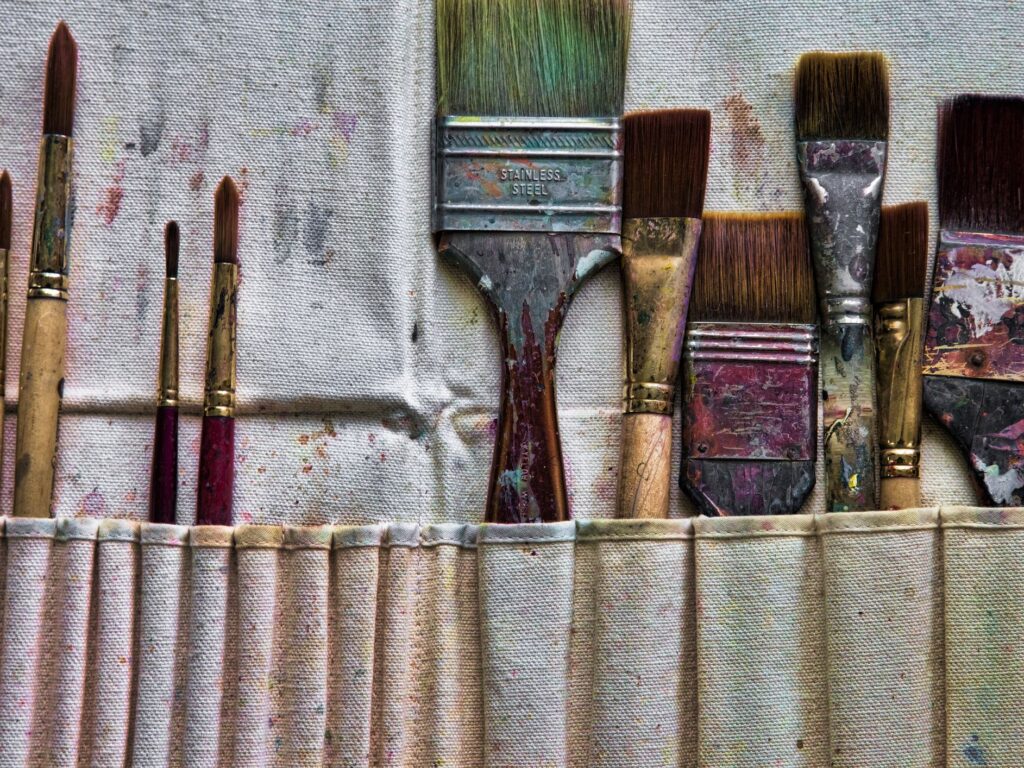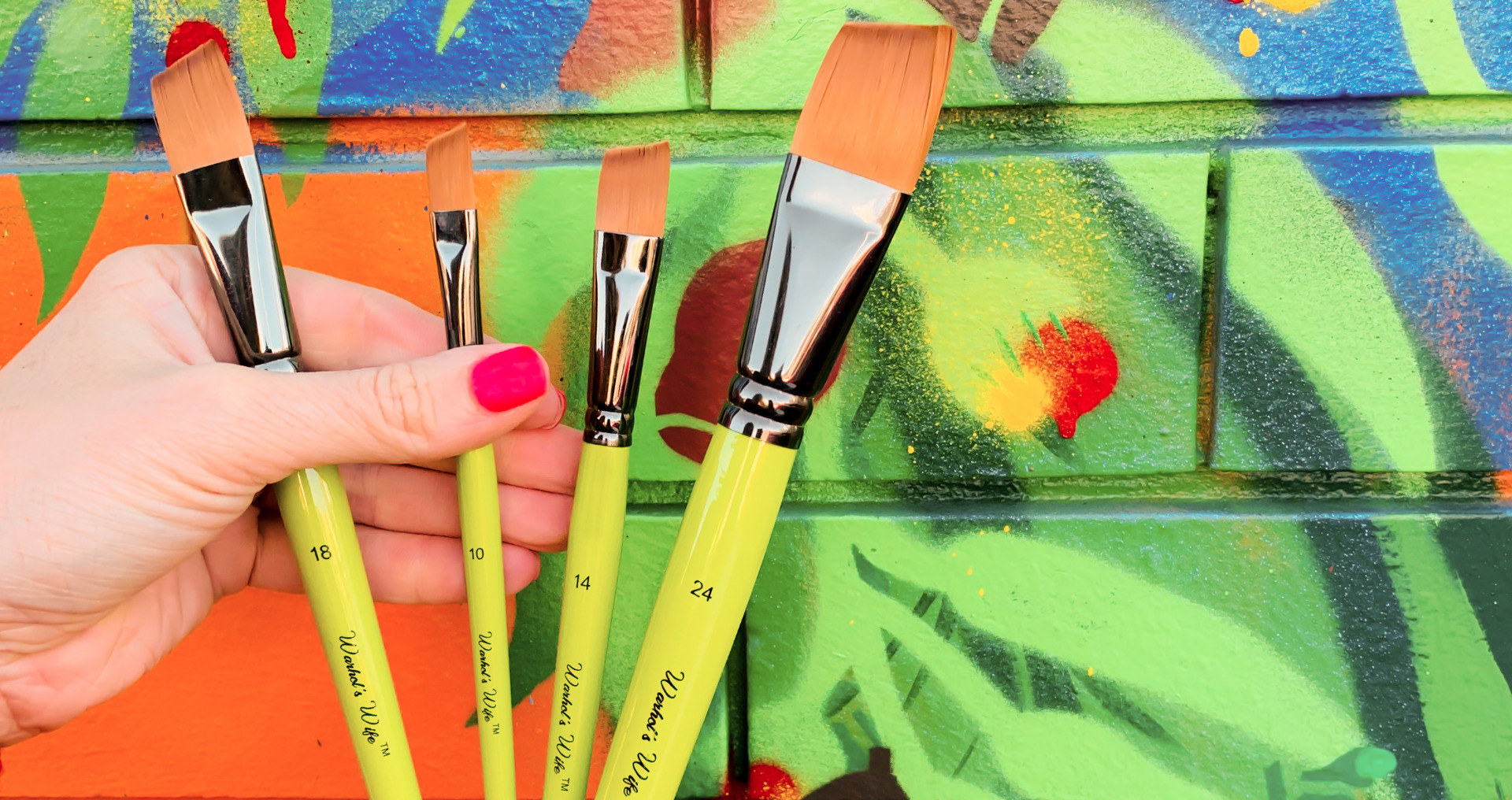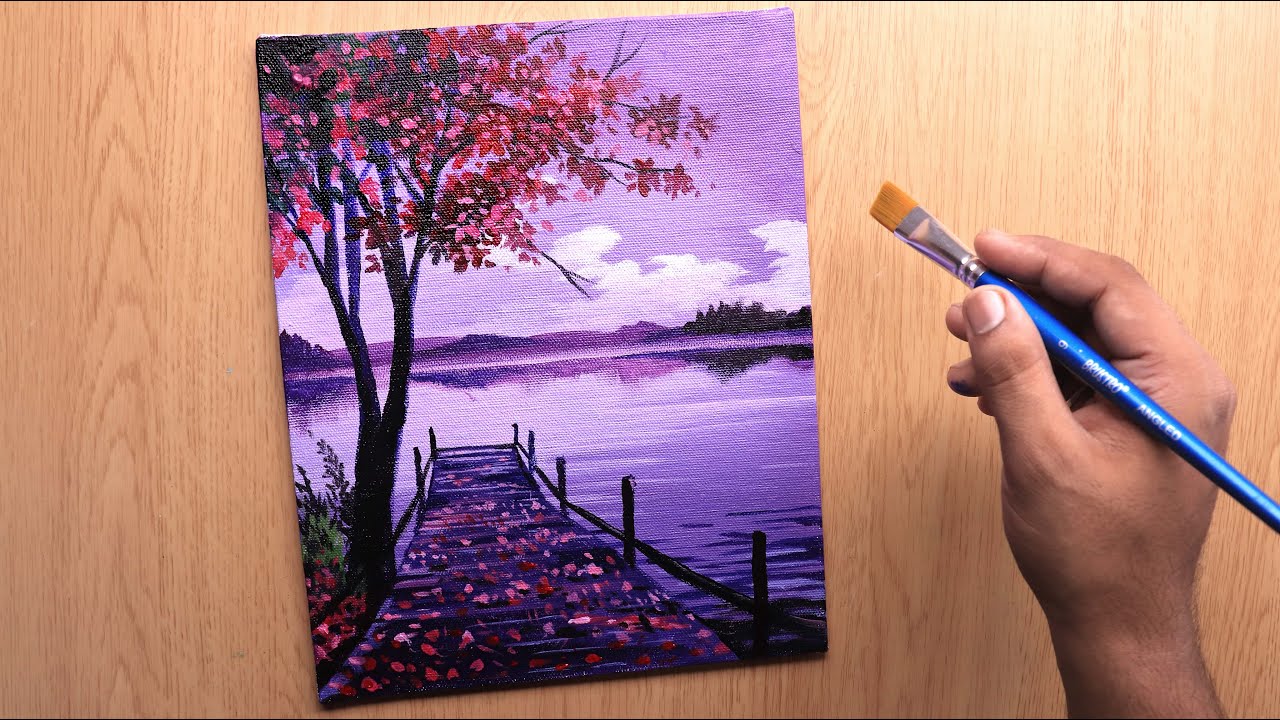You should not be obligated to purchase a new acrylic paint brush every time you paint. Professional painters may reuse their equipment for months, if not years, after each work due to their rigorous cleaning and maintenance.
If you want to replicate this feat, the following points should be considered:
Maintain the Condition of Your Paintbrush
Rinse and clean all brushes immediately after painting using the prescribed cleansers or paint thinner. Thin stains, shellac, varnish, and oil-based paints using paint thinner or turpentine; clean latex and acrylic paint with basic soap and water. Purchase a reasonably priced comb (or dig through your drawers for an old one) and use it to clean and comb the bristles.
Remove dried-on paint off brushes and handles, as well as other painting equipment and supplies, using a stainless-steel wire paint brush. This will help to prolong the life of your brushes and minimize control difficulties caused by dried-on paint and buildup.

IMPORTANT: DO NOT SOAK BRUSHES
While soaking the paint brush for a minute or two in soapy water or paint thinner may assist in the removal of stuck-on paint, avoid soaking brushes in soapy water or paint thinner between usage. This will cause them to lose their shape and may cause natural-bristle brushes to swell, resulting in a deformed shape and undesirable painting results.
Brushes should never be kept on their bristles. Hang brushes to dry and store if feasible. Additionally, you may keep them flat, but take care not to shove anything into the bristles. When a paintbrush is held at the tip, the working tip curls and becomes ineffective for further painting operations.
Consider enlisting the assistance of experienced painters.
If you’re having difficulty completing (or even planning) your next painting job, you’re not alone. While the knowledge offered here will provide you with the necessary skills, we cannot supply you with the drive or assurance to begin. We believe, however, that we can offer you a more appealing alternative. Rather of squandering hours searching for the ideal acrylic paint brush, invest your efforts in finding a professional painter to do the process for you.
The benefit of hiring a professional is that they will bring all necessary equipment and will be knowledgeable about which brushes to use for specific jobs. Additionally, they can do a range of various sorts and sizes of acrylic paint jobs, from interior and exterior painting to a variety of residential and commercial projects.
Painting window frames, skirting, doors, and moldings is a delicate procedure that requires extreme care to get the finest results.

Boosting your capabilities
To get a high-quality finish, always work in parts and paint just until a natural break develops. Never attempt to paint over a wet area, since the bristles of the acrylic paint brush may leave markings on the surface. If a run develops in the wet acrylic paint, swiftly paint over it with light, equal strokes.
When painting a wall, cutting in is critical.
Making use of a paintbrush
1. Wipe the bristles back and forth before using to eliminate any dust. Then, dampen the paint brush with water if you’re going to use water-based acrylic paint; dampen the paint brush with mineral turpentine if you’re going to use oil-based acrylic paint. Ensure that any extra liquid is removed before to painting.
2. Dip halfway into the paintbrush to fill the bristles halfway.
3. Gently tap it on the can’s side; avoid brushing the bristles directly against the lip. The bristles should gently bend as you brush; avoid applying excessive pressure and allowing the acrylic paint to flow freely off the paint brush.
4. Begin with light even strokes and work your way back into the wet border, working from the top down.
5. If painting a wide area with a paint brush, start with a 50cm × 50cm area and then smooth out the acrylic paint with horizontal strokes followed by mild vertical strokes in one direction. If you’re using a brush and roller, begin by painting the area’s edges.

Pads for applying paint
Cuts with application pads may be created in areas with several edges to paint around.
1. Using a paint brush, load the pad with acrylic paint.
2. Securing it to the wall, cleaning the guide wheels, and rolling it along the architrave, skirting, or corner.
3. Strike with long, steady strokes and solid pressure.
Artist’s Brushes: The most frequent kind of artist’s brush is the round paint brush. They include a circular tip that makes it possible to apply a variety of lines in a range of textures.
The second most common kind of acrylic paint brush is the flat brush. They may be held flat on their wide side to generate a thick line or on their side to create a finer line.
Filbert brushes have a rounded tip with a central protrusion. You may create a variety of different-sized strokes by angling the bristles against the surface.
The bristles of fan brushes extend out to the sides. They’re perfect for incorporating various textures and accents into a space.
Rigger brushes are very long and delicately shaped. They’re perfect for generating little, delicate strokes, and particularly for drawing straight, non-bleeding lines.
If you’re planning a painting project, the first step is to get the appropriate equipment. After all, the major goal of do-it-yourself is cost savings. If you wind up hiring someone to come in and correct your work as a consequence of utilizing the incorrect paint brushes or equipment for the task, you’ve effectively undermined the point of completing the work yourself.
If you’re unsure about doing the work on your own, see a professional. If you believe you are competent, give yourself an advantage by storing up on all necessary brushes, whether three or ten are needed. By keeping the information presented here in mind, the process of selecting (and caring for) paintbrushes and other painting equipment will become much simpler.
Final thoughts
The procedures outlined above might aid in the preservation of your acrylic paint brush.



